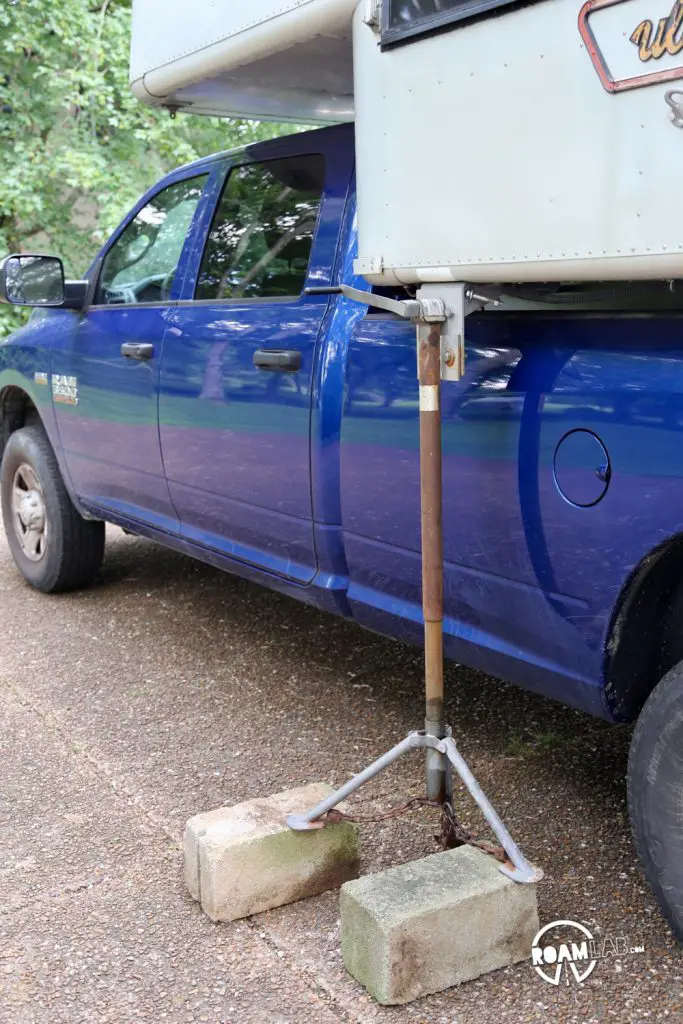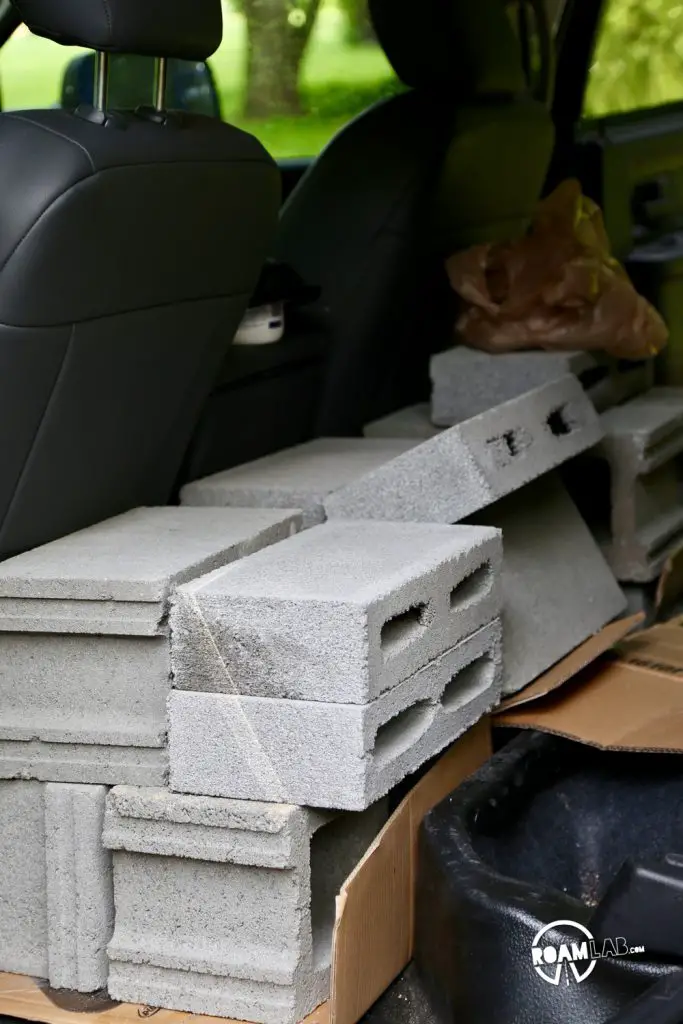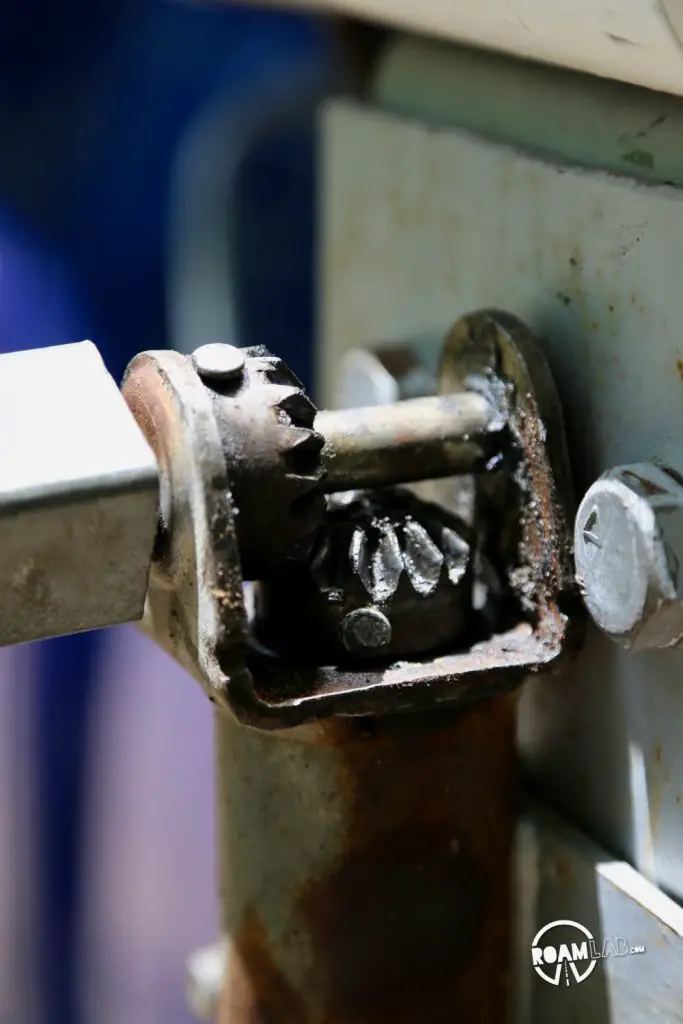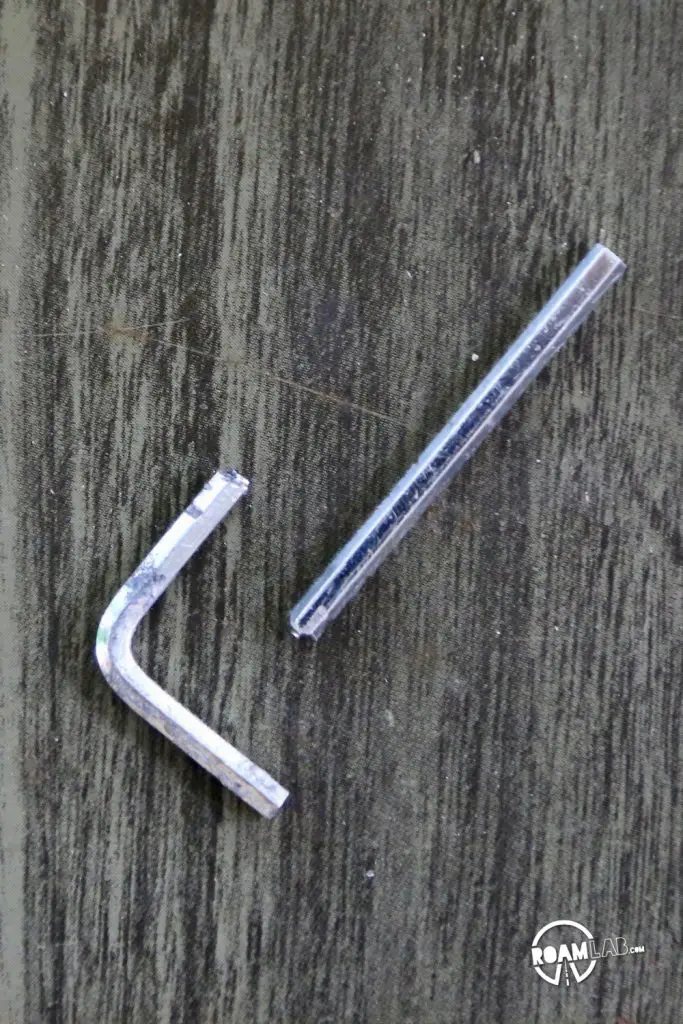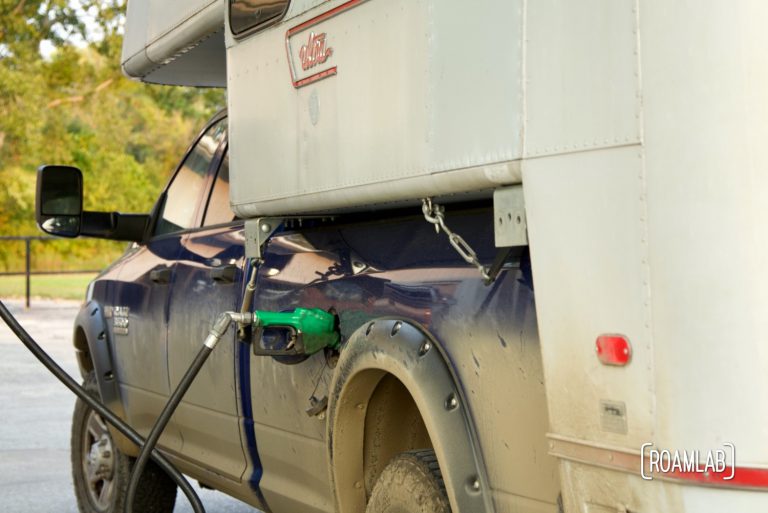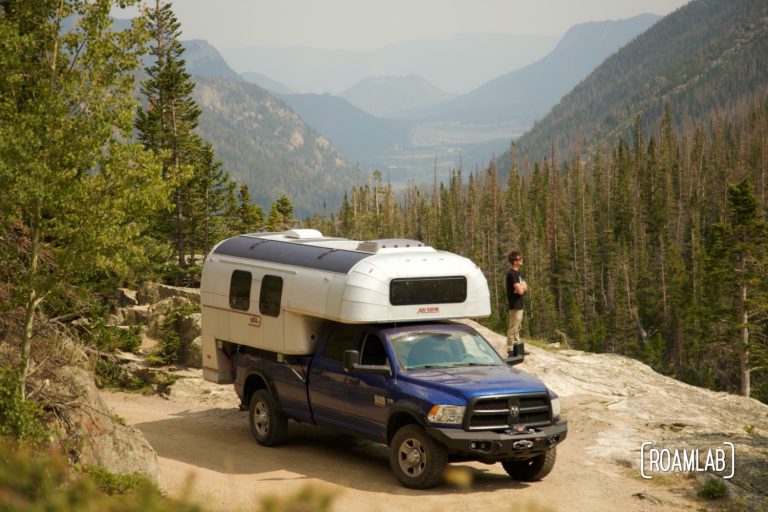After three days of desperately keeping the Avion on our truck, now we are faced with the challenge of getting it off our truck.
It takes the better part of a day to get it off. When we arrive at our work base after the long drive, we have an early dinner and go to bed. The next morning we get to work.
We quickly encounter our first unforeseen challenge: the jacks have been designed for trucks built half a century ago. Our truck has a much wider wheel base. While this is a manageable challenge for the back two jacks, one of the front jack legs stands directly in the path of the truck wheel. It is not as if we can just turn out to avoid it. The truck camper will not have cleared the wheel wells by that point. So, we raise the back two legs on cinderblocks and let the troublesome leg dangle out of the way. Hardly an ideal situation, and one that will get us into trouble later on.
After our trouble with the jacks when loading the camper, we decided to add a little insurance by purchasing a couple heavy duty sawhorses which we can keep under the camper as added insurance in case one of the jacks fails. To start, we set them on cinderblocks, so that they are tall enough to take the weight of the camper.
Once the jacks are positioned, it was relatively easy to raise the camper out of the truck bed. Up it goes, we drive the truck out from under it, and we are clear. However, we want to lower the camper onto a set of cinderblocks. This will make it more accessible and lower the risk of accident by lowering the center of gravity. However, we already broke one of the pins on a jack. This doesn’t prevent the jack from supporting the weight of the camper, but it means that the jack can not move up or down until the pin is replaced. After swapping out multiple pins while loading the jacks onto the camper, we are determined to only have to do this once. We want something stronger than a nail. So we spend the next half hour sawing a small wrench in two. It isn’t perfect, but it works.
Now we can lower the camper…until we can not anymore. This time, our cinderblock solution for the front jack leaves us with eight inches left to lower but nowhere to go. The jack has already been lowered as much as it can. We have to raise the camper again to set it on the sawhorses we had bought for insurance. Now, they will support the weight of the camper as we pulled out the cinder blocks and lowered the jack into position consistent with the others. Once that jack is in place, we removed the saw horses and methodically lowered the camper onto the cinderblocks. Well, almost. Just as the 4×4 the stretched along the blocks begins to take some of the weight of the camper, the jacks reach the limit that they can be lowered. The difference is half an inch at most, but we can not lower the camper enough to fully remove the weight of the camper from the jacks. Worse yet, another pin sheers in a different jack and this one I can not reach to replace. So, we have to just get the jacks off. Fortunately, we bought a generic car jack for backup, and use this to take just enough weight off of each jack to release it from its mounting and lower the camper fully onto the blocks.
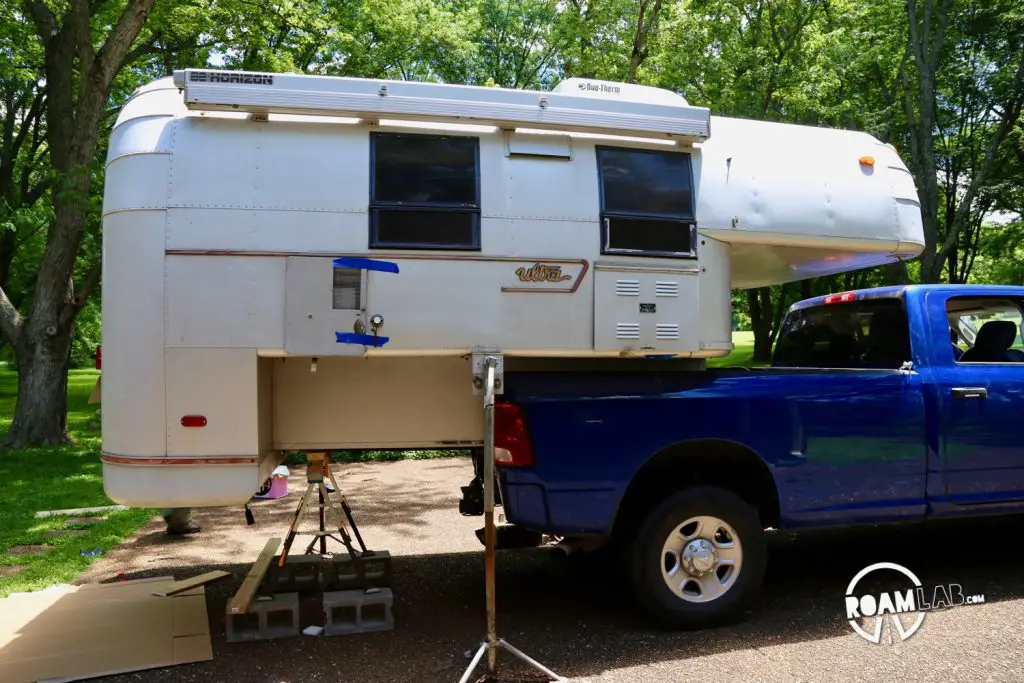
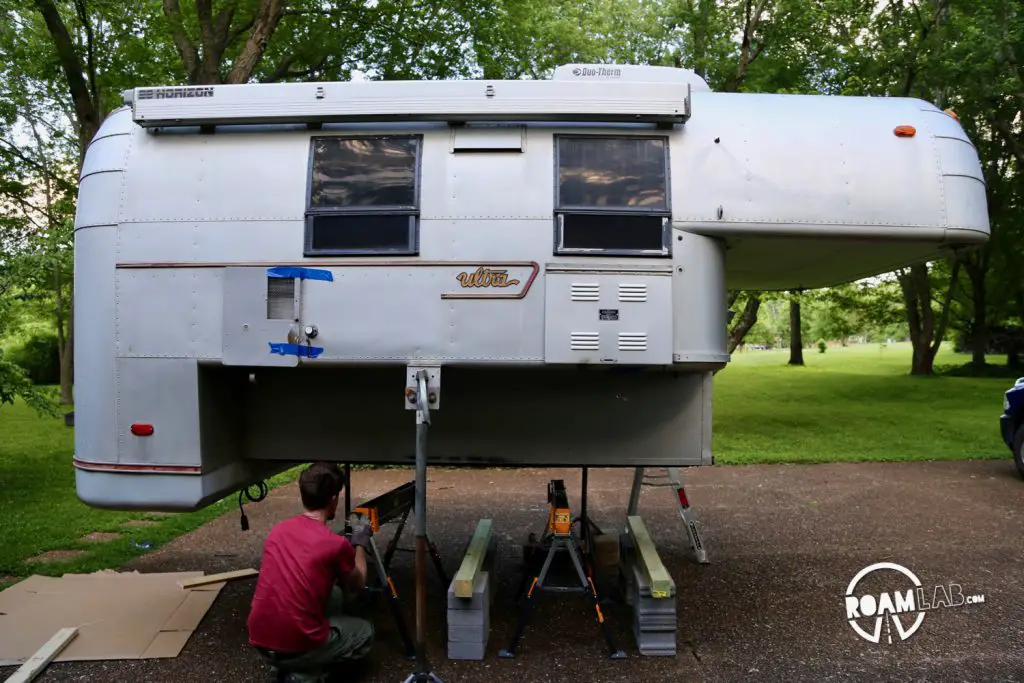
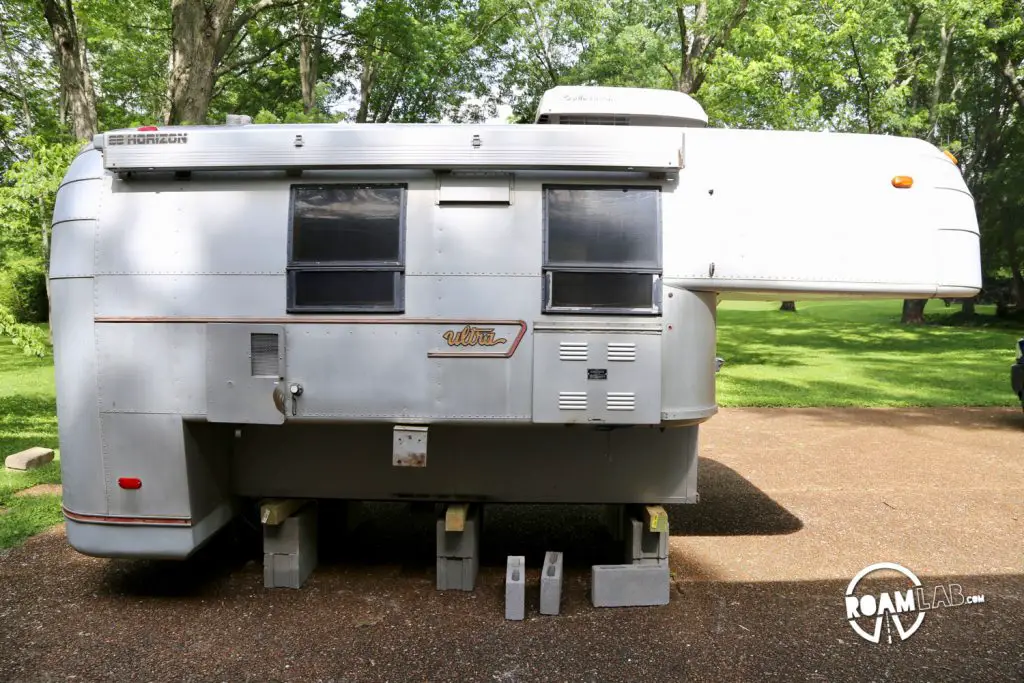
The fireflies are out, exploring the yard by the time we had the camper fully sitting on the blocks.
We will have to buy new jacks before we load this camper again.



